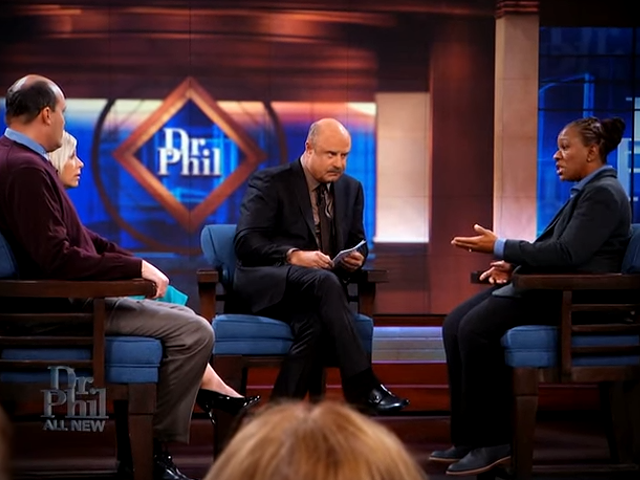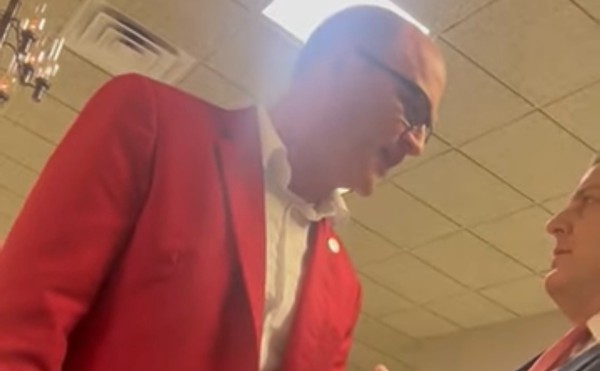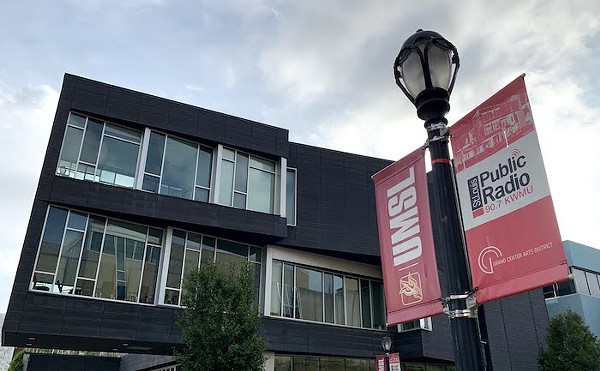On March 12, 2007, Jeanne Paris dialed highway patrol headquarters in Jefferson City to plead for action — again. It was the 25th anniversary of her sister’s murder, and still, no arrests. This time, Sgt. Jamie Folsom picked up the phone.
A hulking ex-Army investigator with a country baritone, Folsom had worked on crimes in Troop I’s zone since 2001. Now he was in charge of that three-person unit.
He already knew of Paris, who had been calling for years.
“I’d never seen anything quite like that,” Folsom tells RFT. “She just never let it go. So I told her we’d take a look at it.”
He and his team pulled the old evidence out of storage and shipped it to the lab for DNA testing. Then they leafed through the piles of reports. It took months; other cases diverted their attention.
Paris called every three weeks for updates. On some occasions, she broke down in frustration.
Her sister-in-law, Darla Spencer, was frustrated too. She’d married Judy’s younger brother decades earlier and could still recall Judy calling her “little sis.”
In 2007 Darla was working as a records officer at a jail in Licking and mentioned Judy’s case to her warden, Michael Bowersox, who was also an adjunct faculty member at Drury College’s campus in Cabool.
Intrigued, Bowersox asked if he could structure his forensic science course around the Judy Spencer case. The family consented. The Salem News caught wind of the class and ran a story, which got picked up by other Ozarks media. The sheriff’s office fielded calls from people with new tips and theories.
Yet Folsom grew irritated. The class had somehow obtained copies of official reports from an open murder case, weakening his advantage as an interrogator.
“Jeanne and Darla were trying anything — that’s how desperate they were,” says Folsom. “But it could’ve backfired.”
On Valentine’s Day 2008, state crime lab analyst Ruth Montgomery contacted Folsom. She had tested Judy’s fingernails. One of the right-hand nails was broken, indicating a struggle, but Montgomery couldn’t extract a usable profile from it.
She did, however, extract a tiny mixture of DNA from the left-hand fingernails. Part of it belonged to Judy, and part to an unidentified male.
Folsom’s task, then, was to find out who.
Folsom and his partner Scott Mertens (son of P.J. Mertens, one of the original investigators) drove out to see Nash on March 13, 2008.
By this time, Nash was 65, a semi-retired maintenance man. He was living in a trailer with his third wife, Terry, in Beaufort, a small community 75 miles northeast of Salem. He had not been charged with any crime in the intervening 26 years.
On the morning investigators arrived, he was leaf-blowing his side yard. They walked down to see him.
Flashing their badges, they explained the new DNA finding. They asked him to swab his own mouth to be eliminated as a suspect. Nash agreed, giving them two samples.
“As Nash was utilizing the buccal swabs,” Folsom later wrote in a report, “he appeared to be very nervous as his hands were shaking.”
Nash walked them back to their Impala, then asked, “Will you let me know if I am eliminated?” Folsom agreed to do so. Then the patrolmen drove away.
In the car, they noted how Nash had phrased his question: He wished to know if, not when, he was eliminated.
“To us, that was kind of an odd statement,” Mertens would later say in a deposition.
On March 19, Montgomery concluded that Nash’s DNA sample was consistent with the unknown male profile. Folsom again drove out to Nash’s trailer on the afternoon of March 26.
Nash was already on his front porch with his schnauzer, who barked hysterically as Folsom approached. The officer recorded their conversation with a hidden microphone.
After some small talk, Nash said, “I don’t want to talk no more. I’ve told them everything I know about this case.”
“I’m gonna tell you straight up, though,” Folsom said. “You matched the DNA that we found on her body.”
“That can’t be possible,” Nash said. “That can’t be possible,” he said again, then a third time.
“It is possible,” Folsom said. “We matched your DNA to evidence at the crime scene there and evidence on Judy’s body.”
“That just can’t be,” said Nash. “Just no way, because I did not have a thing to do with it.”
Nash excused himself to go fix his sink. But Folsom had one last question.
“I have to ask you this,” he said. “It’s a part of my job: Did you kill Judy Spencer?”
“Nope,” replied Nash. “No sir, I did not.”
The next day, Nash was charged with capital murder. Advised by his attorney, he turned himself in at the Franklin County Sheriff’s Department the following morning.
When Folsom picked him up for the transfer to Dent County, Nash was cordial, he recalls. Folsom offered him some gum and made a comment about the weather. Nash didn’t respond. He just stared out the window.






